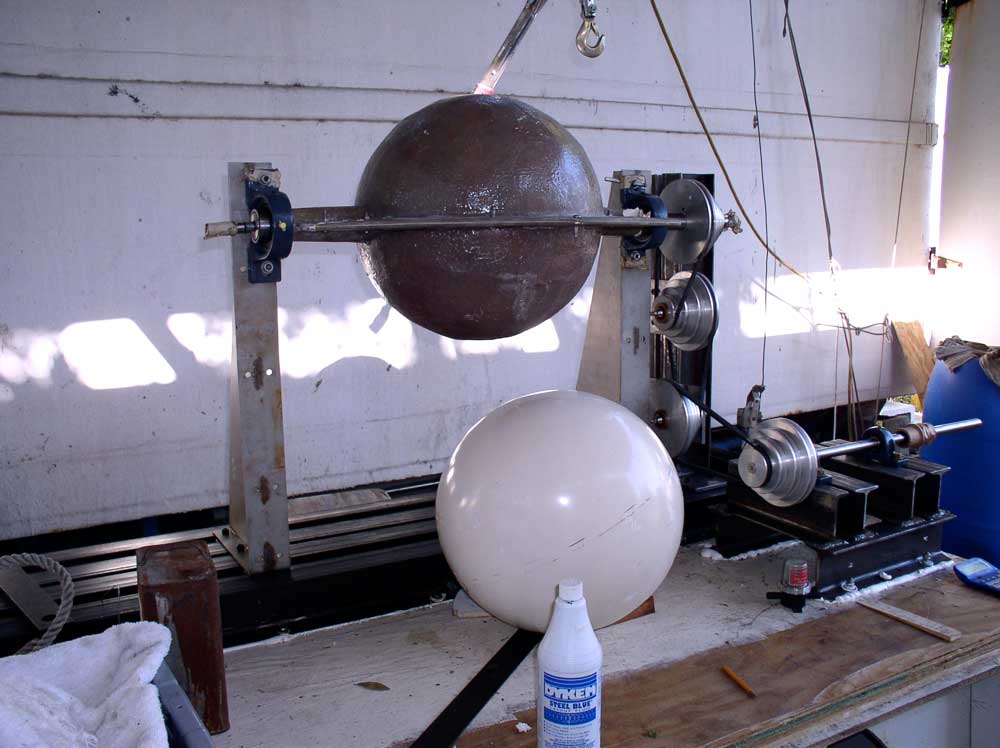As a passenger in a plane, would you want to fly in a craft with a carbon-fiber fuselage which could become rickety because the fasteners holding the whole thing together tend to work loose over time?
Or would you rather fly in a plane that has a large, monolithic carbon-fiber structure? It would need no fasteners and would, therefore, tend to withstand the temperature extremes that aircraft encounter during operation. A new manufacturing technique also lets channels for wiring and the like be molded-in at the same time the fuselage is made. Marcs has been working with composites in Clearwater, Florida for many years.
Working with Marcs not only gives you access to his patented process it also brings years of experience using and perfecting this technique.
View Marcs skills
The technique from Marc Quenneville of Glas Tech Yachts and Composites Clearwater, Florida, combines vacuum infusion with rotational molding to completely eliminate the seam typically found in large composite structures such as:
- Aircraft Fuselages
- Seaplanes
- Submarines
Such seams must be hand-ground. Worse yet, they weaken composite structures. The new technique molds large, monolithic composite structures using almost any moldable material such as:
- Thermosets
- Ceramic Composites
- Carbon-Fiber Reinforced Plastics
Since 1993
The Composites Solution
Vacuum Infusion/Rotomolding Combination
A broad definitionof Composites is:
"Two or more dissimilar materials when combined are stronger than the individual materials".
In 1974, two brothers Marc & Steve Quenneville formed GlastechYachts in Clearwater Florida, a small fiberglassboat manufacturing and repair company. They thought that there was a better way to make Composite wind turbine blades. The question was, "Could a wind turbine blades be made in one "seamless" piece instead of two pieces." If it is possible, the innovative technology would decrease the need for costly maintenance and repair of delaminating wind turbine blade "seams" hundreds of feet up on the top of a towers! With their Glastech 34 Trawler mold making know-how the "seamless one piece" wind turbine blade was the inspiration.
The Green Energy movement propelled the manufacture of Composite wind turbine blades. GE, Gamesa, Vestas, Siemens, Mitsubishi, LM Group and Zulon manufacture their wind turbine blades in two separate pieces. These pieces require fasteners and turbine hub assembly.
With materials at the boat yard, Marc and Steve made a chamber that would hold a vacuum and the mold assembly with various rotational pulleys'. A hollow sphere was molded and was the proof that the concept would work. With the test sphere in hand and with the help of Atty. Ronald Smith a patent for the "Vacuum Assisted Molding" application was submitted on December 31, 2007 and the USP 7,722,348 was received in May 25, 2010.
The mold, be it a blade or any other product, is made in the traditional two piece manner. The differencebetween the current Composite manufacturing of wind turbine blades is that the two piece blades are fastened "after"the infusionprocess and then attached to the hub. Their innovative technology fastens the two halves of the mold which contains the fibercloth and bladder "before" the infusionprocess. The process uses centrifugalforces in a vacuum to feed liquids/gases such as resins, chemical additives or pneumatic pressures thoroughly into a reusable form that is rotated about its own long axis. The distribution of fluids/gasesto the rotating form is accomplished through the use of stationary couplers that surround a rotating shaft. The elimination of mold seams in monolithic objects reduces the major cause of failure in large rotating or non-rotating devices. The finishedproduct is lightweight, durable, corrosion resistant, strong and "seamless". This system is compatible with all types of resins. Composites are used in many critical industrial aerospace and military applications. One of the benefitsof this technology is that labor costs are decreased and turn around times are increased.
This innovative technology makes possible the "seamless" construction of very large diameter objects that also can integrate the metal hubs and ancillaryparts into the Composite product. This innovative concept is so simple that it "can't not work". The Quenneville brothers hope to finda company that has a need for this Composite technology, with the R & D capability for developing the concept.
The inventors of this revolutionary Composite technology have 34 years of experience in the Composite boat industry and can be reached at Gyachts@tampabay.rr.com.
Patent Atty. Ronald Smith can be reached at resmith@mithhopen.co.
The USP 7, 722, 348 and 8, 029, 263 can be seen on google.com
Images from Marc's Patented Prototype Example
His unique prototype is intended to provide the basic concept for OEM fabricators to build larger and more elaborate versions as production machines. He made his prototype machine from scrap plywood, 1-beams, and miscellaneous equipment laying around his boatyard. The outer shell of the prototype is a 4 x 4 x 8-ft I-beam reinforced vacuum chamber made from several layers of plywood. Inside, a two-piece mold assembly (usually made from fiberglass) bolts together and rotates about an axis. More-complex shapes, such as car bodies, would rotate about two axes.
Ready to find out more?
Check out the complete process on a simple round monolithic structure








